Eight years ago, Peter Korn and Julia Andersson moved to their current house in southern Sweden, where they have created not only a beautiful home but also
a nursery, Klinta Trädgård, that provides plants for their numerous public planting projects. These commissions, as with much of their home garden, are planted in pure sand, and Peter has become well known as a pioneer of this approach, which offers a range of benefits such as less watering, staking and weeding. “Think of a hot sandy beach,” says Peter. “The surface can be so hot that you can’t walk on it, but dig in your toes and a few centimetres down it is always cool and moist.”
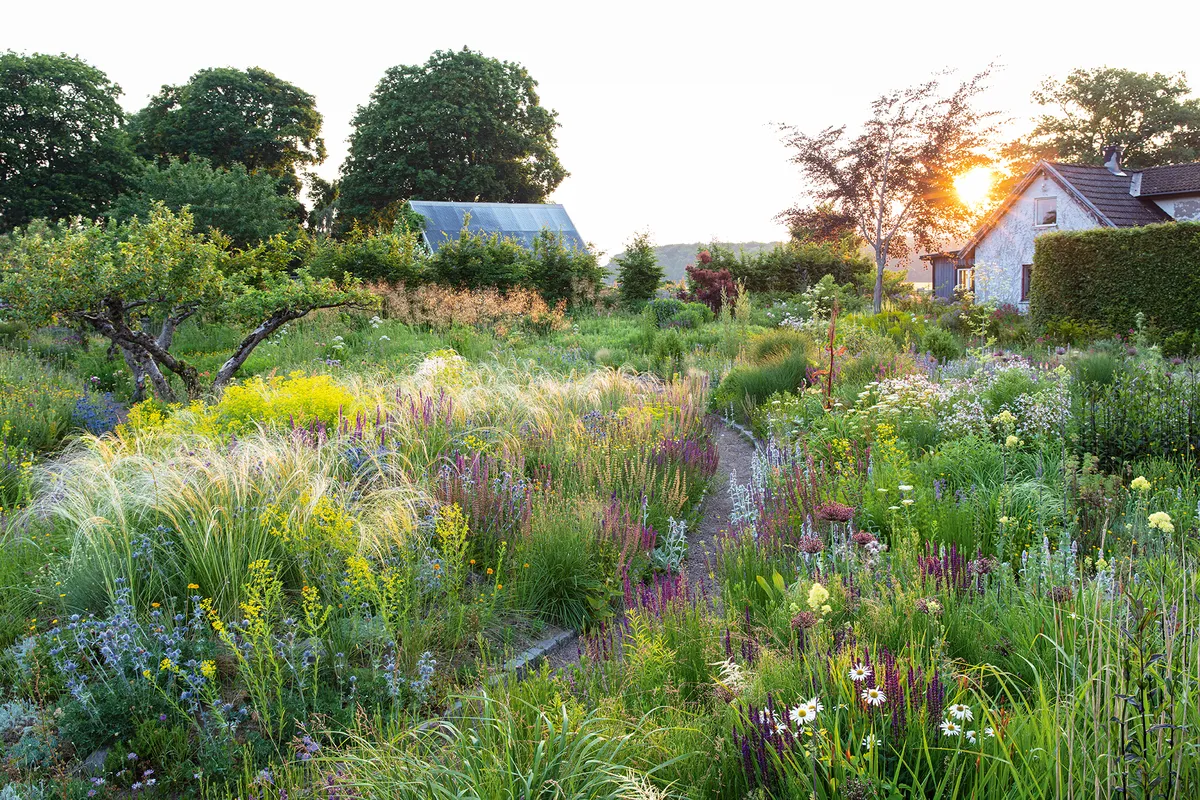
Plants access this limited moisture by producing larger root networks and although there is an abundance of mycorrhizae in sand, the relative lack of available nutrients means that plants don’t grow as lushly – hence less need for staking. Helianthus salicifolius, for example, gets so tall on regular soil that it inevitably flops, whereas in sand it remains erect at a more manageable two metres high. This slower – but harder growth – means short-lived plants often persist for years, and in many cases plants literally develop ‘a thicker skin’ meaning they are less susceptible to pests such as aphids and in turn the diseases that are spread through these pests.

However, plants first grown in conventional potting compost often struggle to establish in sand. As Peter and Julia’s number of public commissions increased, they needed more sand-grown plants, which wouldn’t suffer this ‘transplant shock’. This was a primary reason for moving to Klinta. The nursery and garden work together symbiotically, with the various borders acting as a source of propagation material for the nursery, and the nursery returning a steady stream of plants for expansion or rejuvenation. As Peter explains, “the nursery allows the garden to exist”.

Almost all of the sand beds are mounded. This creates microclimates in which Peter can site plants with specific growing requirements. Many species were collected by his brother in Asia, while the yellow achillea on the left is a diminutive Balkan species, probably Achillea coarctata, given to Peter by the renowned French nurseryman Olivier Filippi.
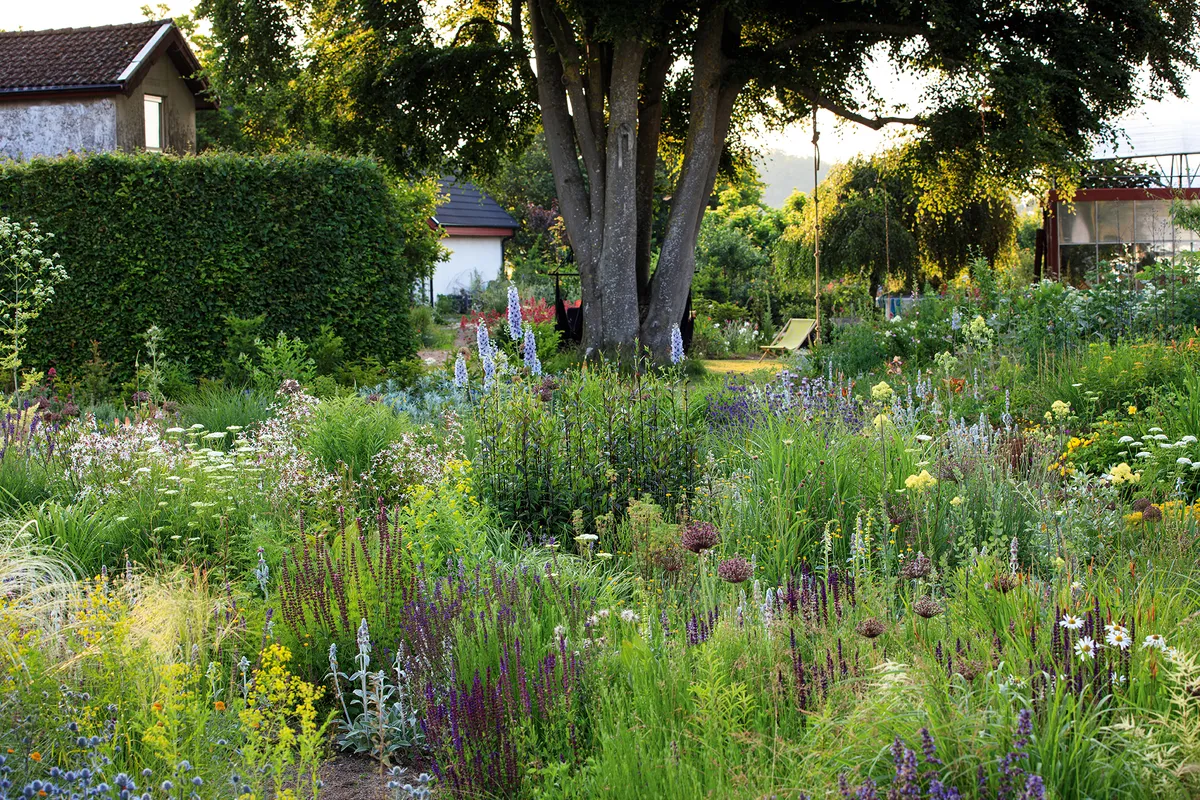
The delicate interplay of perennials within a matrix of grasses, predominantly varieties of Stipa, is clear to see, with the light-blue spires of Delphinium ‘Morgentau’ standing out against the trunk of a magnificent beech tree. Peter and Julia have no concerns about mixing cultivated and wild plants, creating an accentuated naturalism generous in its diversity and busy with life.

On this steep-banked sand bed, pale candelabras of Echium italicum and white umbels of Athamanta vestita pop up throughout the planting with Eryngium alpinum and spires of Verbascum. These spires provide vertical contrast to the orange buttons of Cota tinctoria subsp. sancti-johannis, while the pale-mauve of Salvia hypargeia complements the deep blue of Lallemantia canescens.

A generous swathe of metallic blue Eryngium x zabelii ‘Big Blue’ runs through the planting under the eccentric limbs of an old apple tree. Self-seeded Valeriana officinalis and Echium vulgare insinuate themselves between the perennials, including a large group of Achillea filipendulina, their flat, yellow heads contrasting with the white globes of Allium stipitatum ‘Mount Everest’.
In brief What Private garden and nursery of Peter Korn and Julia Andersson. Where Sweden. Size Three-and-half acres. Soil Sand beds over alkaline soil. Climate Cold and windy winters with mild summers and light to moderate rainfall. Hardiness zone USDA 7a.
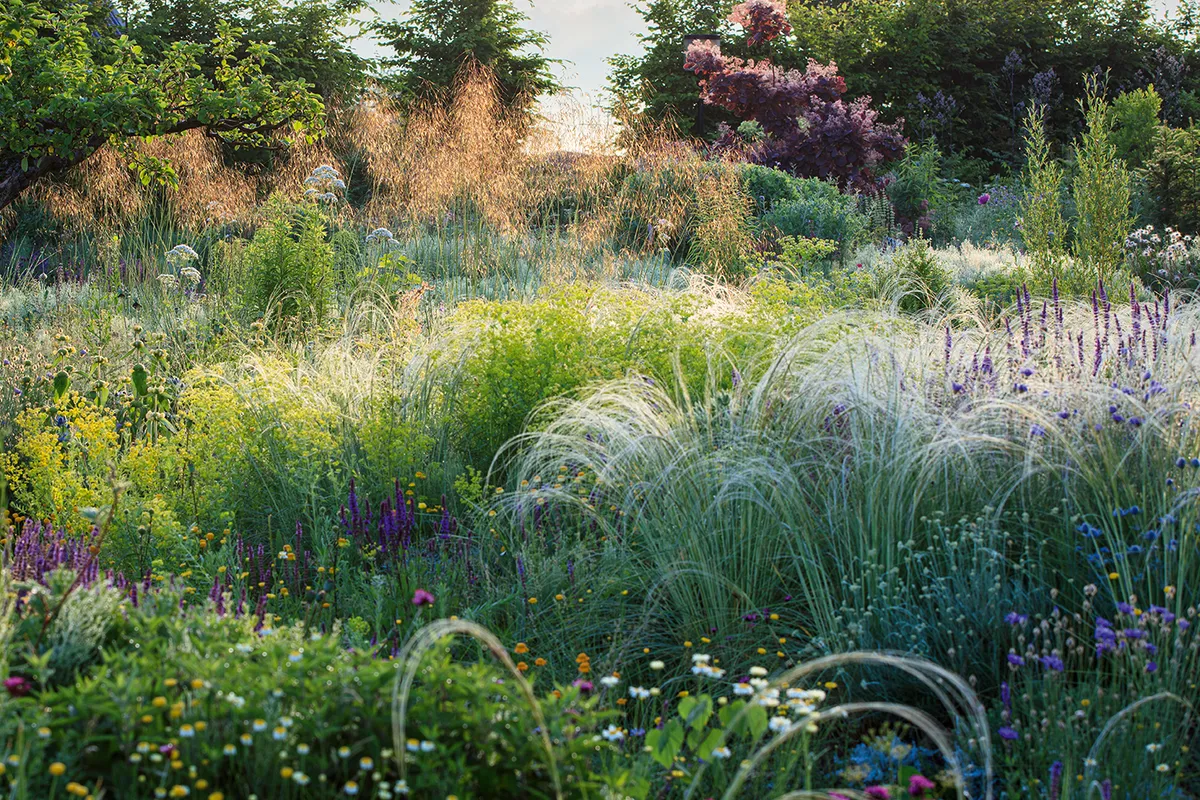
A haze of gauzy Stipa gigantea hovers above acid-yellow Euphorbia. In the foreground, the dancing seedheads of Stipa pulcherrima are cut through by
stiff purple spikes of Salvia nemorosa ‘Caradonna’ and the slightly longer and looser stems of Salvia dumetorum. At the very front of the border are the papery, blue flowerheads of Catananche caerulea hold their own against competition from dark-pink dots of Dianthus cruentus.
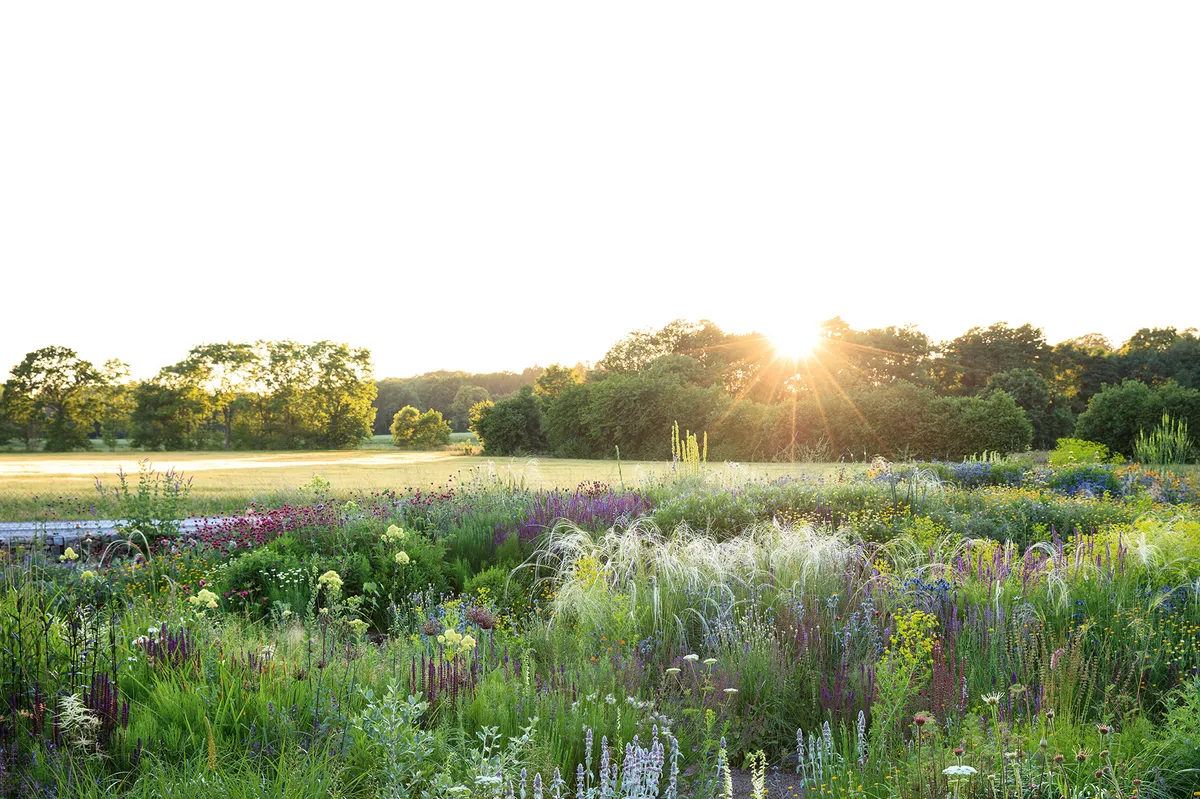
The cool palette of silver and purple from Stachys byzantina, Salvia dumetorum and the pale plumes of Stipa are lifted by the yellows of Euphorbia, Anthemis and Verbascum, while shots of intense colour are provided by Dianthus cruentus over a base note of blue from Eryngium x zabelii ‘Big Blue’ and Catananche caerulea.
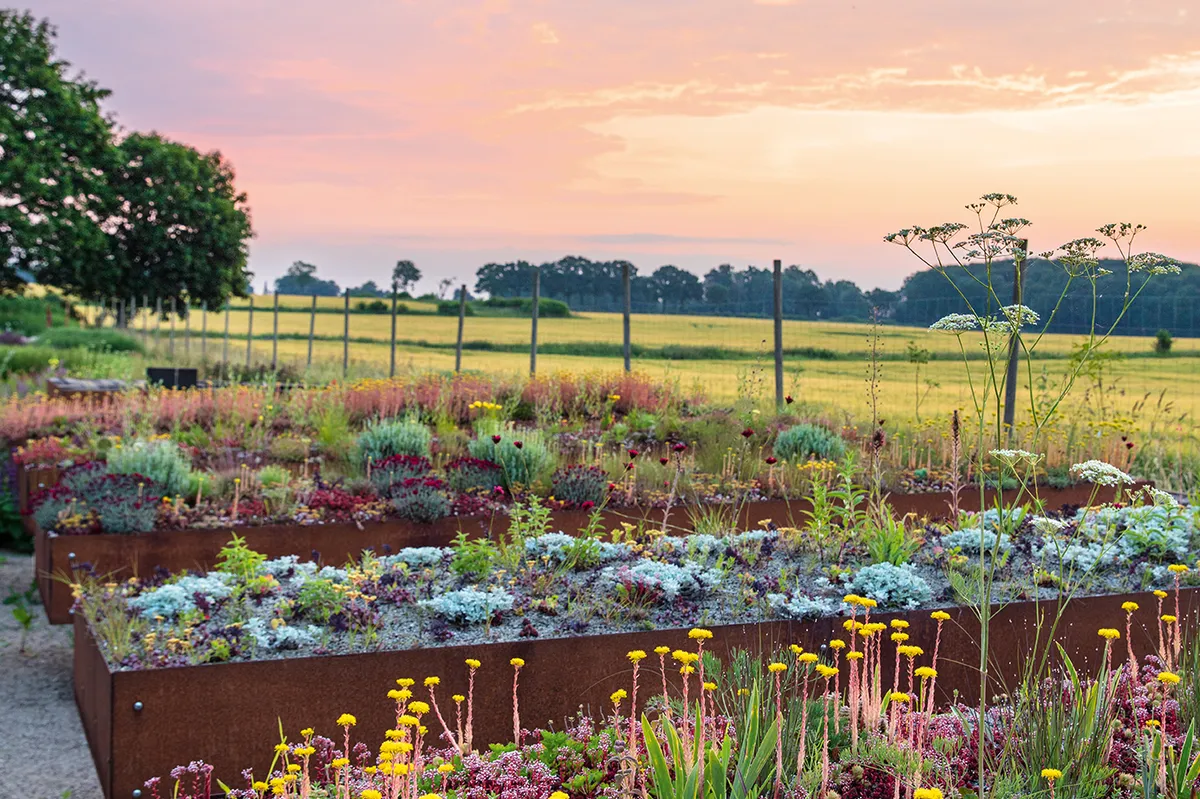
Corten-steel raised beds reveal the surprising depth (40cm) of Peter’s various experiments in rooftop gardening. Each bed uses a different substrate mix and formation of structures to provide crevice habitats or deeper pockets of substrate for a tailored assortment of species. These beds need to be lightweight, so he uses a varying ratio of Leca clay balls, pumice, lava, sand and biochar.
Choosing species that are naturally adapted to arid climates, combined with the in-built toughness of sand-grown plants, allows for diverse communities, which provide visual interest but also, crucially, habitat and forage for wildlife. It is the love of biodiversity, more than anything, that drives this gardening pair.
Peter remembers a time when he had to stop every hour to scrape insects off the windshield and headlights when driving at night. “Today you can drive for a thousand miles and not have to stop once,” he says. At Klinta, Peter and Julia encourage every type of plant and are working with entomologists and ecologists to record the diversity in the garden. In 2017, the couple initiated the Urban Growth Conference to promote ecologically driven design and they have recently purchased a nearby farm to create new habitats and to provide accommodation for more students. In the face of a rapidly changing climate and biodiversity crisis, Peter and Julia are wonderful examples of the positive contribution gardeners can make.
Here's more on gardening in a changing climate
The full version of this feature appeared in Gardens Illustrated magazine. Subscribe here